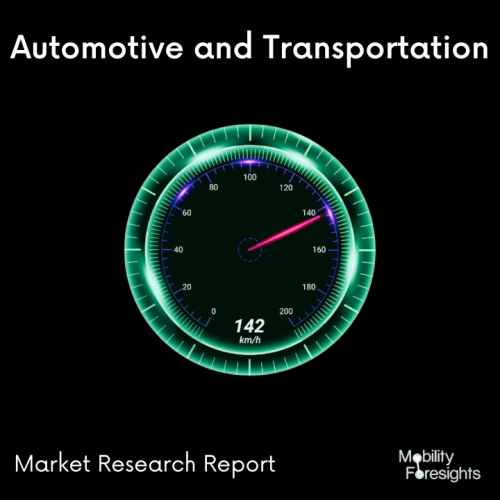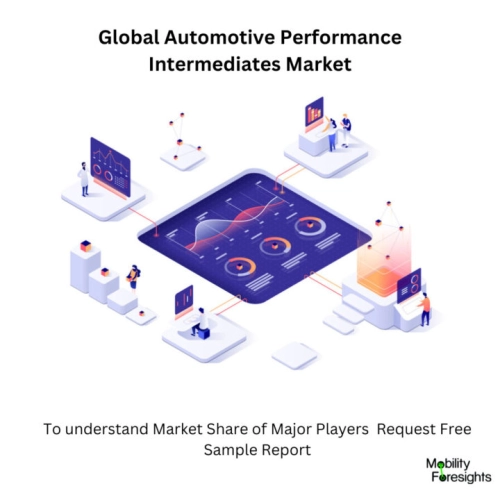
- Get in Touch with Us

Last Updated: Apr 25, 2025 | Study Period: 2023-2030
Chemical substances known as performance intermediates are employed in the production of goods for the automotive industry, including paints, fuels, and lubricants.
They serve as raw materials for the creation of final items and are intermediate products in the chemical synthesis process.
These intermediaries might make vehicle parts like engines and gearboxes more effective and durable. They can help reduce pollution and increase fuel efficiency in automobiles.
One of the biggest and most advanced plants in Europe for the production of liquid hydrocarbons is the Performance Intermediates Plant. In an effort to increase efficiency, the factory has been totally integrated with the refinery.
The crosslinkable caprolactone-modified acrylics are utilised in paints, adhesives, printing inks, cementitious coatings, plastic and elastomer coatings, powder coatings, and automobile coatings.
To create the urethane acrylates utilised in UV-cured coatings and 2K polyurethanes, the hydroxyalkyl caprolactone (meth)acrylates may also be combined with isocyanates.
These oligomeric urethane acrylates enhance flexibility, adhesion, weatherability, durability, and impact resistance. Both 2K urethanes and UV curing are utilised by formulators in clear-coat vehicle compositions for these reasons.

Global Automotive Performance Intermediates market accounted for $XX Billion in 2022 and is anticipated to reach $XX Billion by 2030, registering a CAGR of XX% from 2023 to 2030.
For automakers, suppliers of components, tyre producers, and other businesses in the automotive sector, Evonik Performance Intermediates provides a wide choice of exceptional products.
Isobutene is a versatile gas that improves lubricant performance, strengthens sealants, and gives dishwashing detergents a nice citrus aroma.
Safety is the main consideration when transporting liquefied isobutene, which sets great demands on logistics. They employ specific machinery for the shipments.
They complement supply chain knowledge with a variety of delivery methods, including road deliveries using tank trucks, rail deliveries using tank waggons, intermodal deliveries using tank containers, and seagoing supplies using barges and other boats.
In internal combustion engines, the octane booster MTBE optimises fuel combustion and lowers fuel use and hazardous pollutants. Thus, the inclusion of MTBE in gasoline results in a more effective utilisation of fossil fuels and improved air quality.
Production of MTBE at Evonik's two facilities in Marl, Germany, and Antwerp, Belgium, gives customers throughout the world more supply assurance and flexibility.
| Sl no | Topic |
| 1 | Market Segmentation |
| 2 | Scope of the report |
| 3 | Abbreviations |
| 4 | Research Methodology |
| 5 | Executive Summary |
| 6 | Introduction |
| 7 | Insights from Industry stakeholders |
| 8 | Cost breakdown of Product by sub-components and average profit margin |
| 9 | Disruptive innovation in the Industry |
| 10 | Technology trends in the Industry |
| 11 | Consumer trends in the industry |
| 12 | Recent Production Milestones |
| 13 | Component Manufacturing in US, EU and China |
| 14 | COVID-19 impact on overall market |
| 15 | COVID-19 impact on Production of components |
| 16 | COVID-19 impact on Point of sale |
| 17 | Market Segmentation, Dynamics and Forecast by Geography, 2023-2030 |
| 18 | Market Segmentation, Dynamics and Forecast by Product Type, 2023-2030 |
| 19 | Market Segmentation, Dynamics and Forecast by Application, 2023-2030 |
| 20 | Market Segmentation, Dynamics and Forecast by End use, 2023-2030 |
| 21 | Product installation rate by OEM, 2023 |
| 22 | Incline/Decline in Average B-2-B selling price in past 5 years |
| 23 | Competition from substitute products |
| 24 | Gross margin and average profitability of suppliers |
| 25 | New product development in past 12 months |
| 26 | M&A in past 12 months |
| 27 | Growth strategy of leading players |
| 28 | Market share of vendors, 2023 |
| 29 | Company Profiles |
| 30 | Unmet needs and opportunity for new suppliers |
| 31 | Conclusion |
| 32 | Appendix |